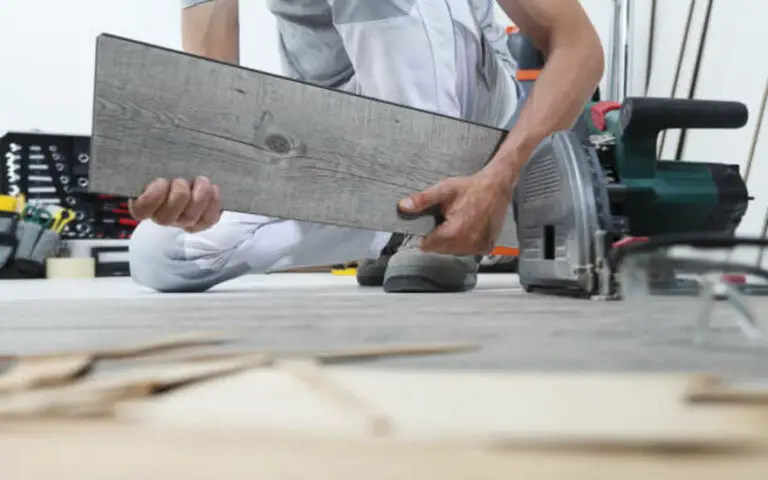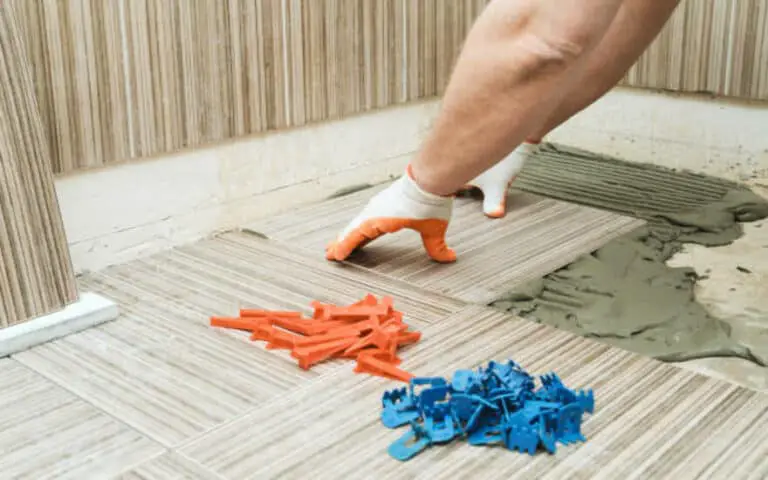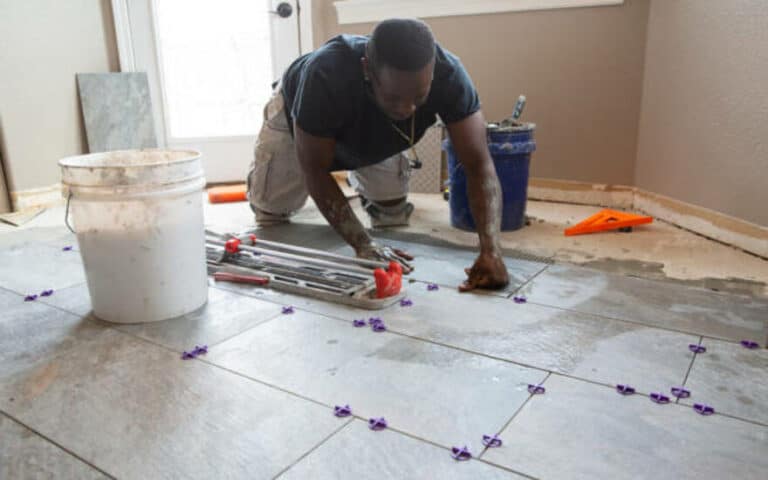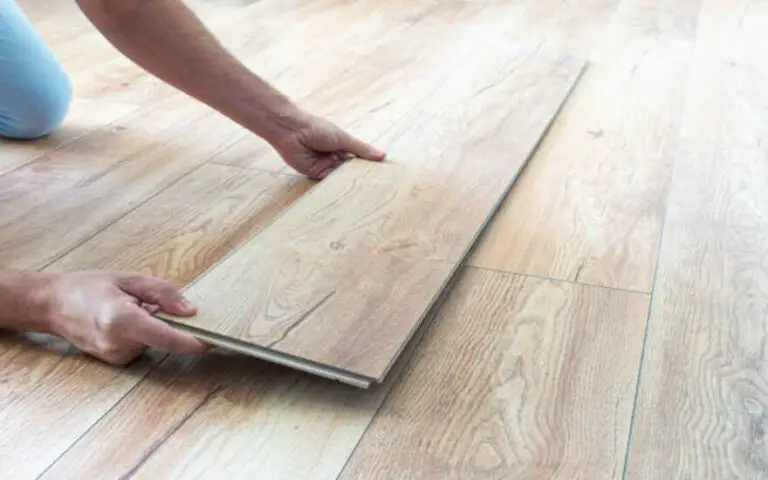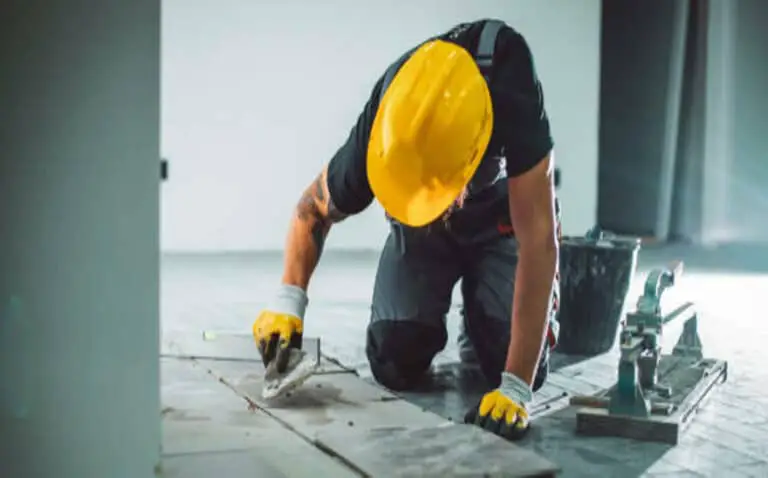If you’re looking for a way to restore your laminate flooring to its former glory, Then How to Fix a Broken Laminate Floor is for you. Laminate flooring is an excellent option for anyone looking for a durable and stylish flooring option. But, like all types of flooring, laminate flooring can suffer from damage over time, from water damage to scratches and dents. This article will discuss common laminate floor problems, the tools and materials needed for laminate floor repair, step-by-step repair instructions, tips and tricks for fixing laminate floors, and troubleshooting common laminate floor problems and our top three ways to repair laminate flooring.
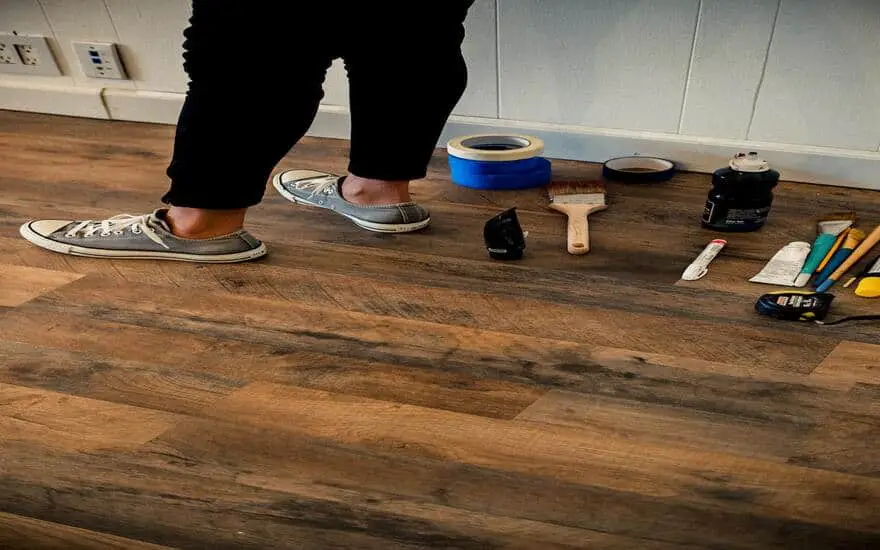
Quick Start About to Laminate Flooring
Laminate flooring is an excellent option for anyone looking for a durable and stylish flooring option. It’s made of several materials, including a core layer, an adorning layer, and a wear coating. The core layer comprises a high-density fiberboard, making the floor more durable and resistant to damage. The decorative layer is made of a high-resolution image of real hardwood, giving the floor its natural look.
The wear layer shields the floor from scrapes and dents and makes it easy to clean and maintain.
Laminate flooring is also known for its easy installation. It’s a great DIY project and can be done in just a few hours. Most laminate flooring comes with a click-lock system, which makes it easy to put together without any tools.
This makes it an excellent option for anyone looking for an affordable, easy-to-install flooring option.
Common Laminate Floor Problems
Unfortunately, even though laminate flooring is durable and low-maintenance, it can still suffer from joint problems over time. These problems can range from minor annoyances to significant damage.
One of the most common laminate floor problems is scratches and dents. Furniture, pets, or everyday wear and tear can cause this. Scratches and patterns can make your floor look worn and dull and may require repair to restore its original look.
Water damage is another common problem for laminate floors. If your foot is not sealed correctly, it could become stained and warped over time. This is especially true in high-moisture areas, such as bathrooms and kitchens. Water damage can be a significant issue and requires immediate attention to avoid further damage.
At last, laminate floors can suffer from fading over time. This is caused by exposure to sunlight and other sources of UV light. Fading can make your laminate floor look dull, worn, and challenging to repair.
Tools and Materials Needed for Laminate Floor Repair
Before you begin your laminate floor repair, you’ll need to ensure you have all the necessary tools and materials.
Here’s a list of what you’ll need:
- Laminate floor repair kit
- Laminate floor cleaner
- Floor buffer
- Soft cloths
- Vacuum cleaner
- Sandpaper
- Plastic putty knife
- Laminate floor adhesive
- Laminate flooring patch
Once you have all these tools and materials, you can start your laminate floor repair.
7-Step Guide: How to Fix a Broken Laminate Floor?
Now that you have all the necessary tools and materials, it’s time to start your laminate floor repair.
Here’s a step-by-step direction to assist you in getting started:
- Vacuum your laminate floor to remove any dirt and debris.
- Use a soft cloth and laminate floor cleaner to clean the area needing repair gently.
- Use a floor buffer to sand down the site if there are deep scratches or dents.
- Use a shapeable putty cutter to scrape away any remaining dirt or debris.
- Apply a thin layer of laminate floor adhesive to the area that needs repair.
- Place the laminate floor patch over the adhesive and press down to secure it.
- Let the adhesive dry completely before walking on the floor.
Tips and Tricks for Fixing Laminate Floors
Fixing laminate floors can be tricky, but there are rare tips and tricks to complete the job easier.
- First, make sure to use a laminate floor repair kit. These kits contain everything you need to repair your laminate floor, including adhesive, patch, and instructions.
- Second, make sure to use a suitable adhesive for the job. Different types of laminate floors require other adhesives, so check the manufacturer’s instructions before you begin.
- Third, let the adhesive dry completely before walking on the floor. This will ensure the patch is secure and won’t come off when you walk on it.
- Finally, make sure to use a soft cloth to clean the floor. This will help vacate any mud and debris from the area needing repair.
Troubleshooting Common Laminate Floor Problems
If you’re having trouble fixing your laminate floor, there are periodic troubleshooting actions you can bear.
Make sure the area is clean before you start. Dirt and debris can prevent the adhesive from sticking properly.
- Make sure to use a suitable adhesive for the job. Different types of laminate flooring require other adhesives, so read the manufacturer’s instructions before you begin.
- Use a floor buffer to sand down deep scratches or dents. This will help the patch to adhere better and make the repair look more professional.
- Let the adhesive dry completely before walking on the floor. This will ensure the patch is secure and won’t come off when you walk on it.
3 Ways to Repair Laminate Flooring
If you’ve decided to repair your laminate floor yourself, there are a few different ways you can do it. Here are our top three ways to improve laminate flooring:
- DIY Laminate Floor Repair: This is the most accessible and affordable way to repair your laminate floor. All you require is a laminate floor restoration kit with everything you must to improve your base.
- Professional Laminate Floor Repair: If you’re not confident in your DIY skills, you can always hire a professional to repair your laminate floor. Professional laminate floor repair services can be costly, but they’ll ensure the job is done correctly.
- DIY Laminate Floor Replacement: If your laminate floor is beyond repair, you can always replace it yourself. Laminate flooring is easy to install and doesn’t require any special tools or skills.
Prevention and Maintenance of Laminate Floors
One of the best ways to avoid costly repairs is to maintain your laminate floor properly.
Here are a periodic tips to support you in keeping your laminate floor looking like new:
- Vacuum or sweep your laminate floor regularly to remove any dirt and debris.
- Use a damp mop to clean any spills or stains.
- Place furniture pads underneath the furniture to avoid scratches.
- Avoid walking on the floor with high heels or other sharp objects.
- Place rugs or mats in high-traffic areas to protect the floor from wear and tear.
- Use a floor buffer to remove any deep scratches or dents.
Professional Laminate Floor Repair Services
If you’re not confident in your DIY skills, you can always hire a professional to repair your laminate floor. Professional laminate floor repair services can be costly, but they’ll ensure the job is done correctly.
When hiring a professional, ask for references and read reviews before making a decision.
This will help guarantee that you acquire the best assistance for your money. You should also ask about the service’s cost and ensure it’s within your budget.
Can you repair the damaged laminate flooring?
Yes, you can repair damaged laminate flooring.
Depending on the type of damage, there are a few additional methods to go about it.
For minor scratches and dents, you can use a laminate floor repair kit to fix the problem. For more severe damage, such as water damage or fading, you may need to replace the damaged piece of laminate flooring.
What is the life expectancy of laminate flooring?
The life longing of laminate flooring counts on several elements, such as the quality of the flooring, the level of maintenance, and the amount of traffic the floor gets.
On average, laminate flooring can last anywhere from 10 to 25 years with reasonable sustenance and keeping.
Why is my laminate floor coming apart?
There are several reasons why your laminate floor may be coming apart.
- One of the most common causes is water damage. If your foot is not sealed correctly, it can become stained and warped over time.
- Another common cause is improper installation. If the floor is not installed correctly, it could fall over time.
- Finally, it could be due to wear and tear.
Over time, your laminate floor may suffer from scratches and dents, which can cause it to come apart.
Why do laminate floors sound hollow?
Laminate floors can sound hollow for a few different reasons. One of the most common causes is loose or missing flooring. If the floor is not secured correctly, it can create a hollow sound when you walk on it. Another common cause is water damage.
If the bed has become warped or damaged by water, it can create a hollow sound. Finally, it could be due to poor installation. If the floor is not installed correctly, it could create gaps that can cause an open sound.
FAQ (Frequently Asked Questions)
What kind of glue to use on laminate flooring?
The glue you use on laminate flooring depends on the type of flooring and the repair you’re doing. For most repairs, you’ll need to use a laminate floor adhesive. This type of adhesive is designed for laminate flooring and is easy to apply.
Can Laminate Be Lifted And Relaid?
Yes, laminate flooring can be lifted and relaid. This is ideal if you enjoy transforming the look of your laminate floor without replacing it.
How do you fix open spots on laminate floors?
Hollow spots on laminate floors can be fixed with a few simple steps.
First, use a plastic putty knife to scrape any dirt or debris from the area.
Next, use a floor buffer to sand down the site. Then, apply a thin layer of laminate floor adhesive to the area. Lastly, press the laminate floor patch over the glue to secure it. Let the adhesive dry completely before walking on the floor.
How to repair laminate flooring water damage?
If your laminate floor has suffered water damage, you’ll need immediate action to avoid further damage.
The first step is to terminate any leftover water from the area. Then, use a pliable putty cutter to grind any dirt or debris from the site. Finally, apply a thin layer of laminate floor adhesive to the area.
Final Verdict
Laminate flooring is a widespread option for many homeowners due to its durability, low supervision, and accessible structure. But, like all types of flooring, laminate flooring can suffer from damage over time. If you’re looking for a way to restore your laminate flooring to its former glory, then this.

